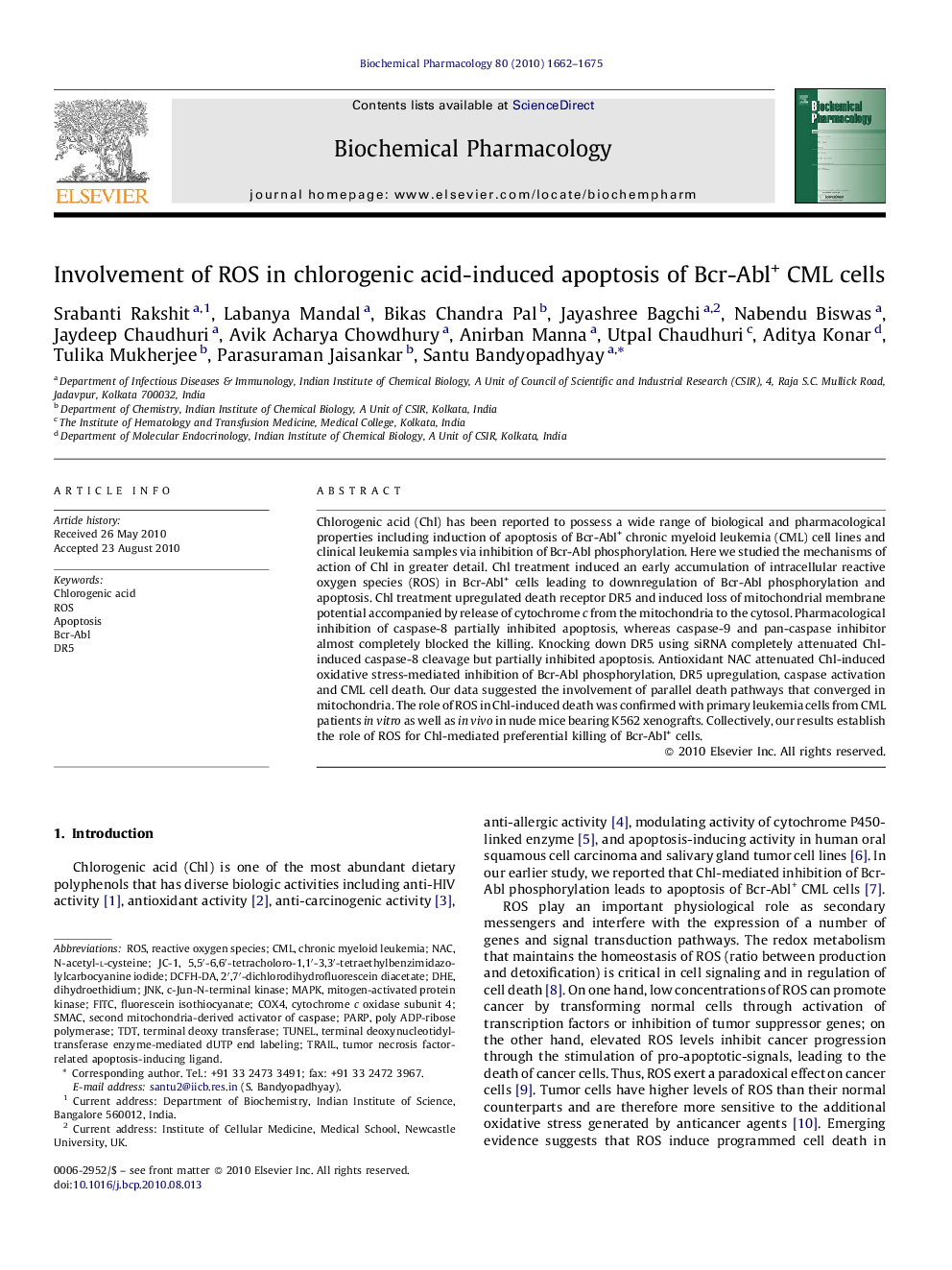| Article ID | Journal | Published Year | Pages | File Type |
|---|---|---|---|---|
| 2513217 | Biochemical Pharmacology | 2010 | 14 Pages |
Chlorogenic acid (Chl) has been reported to possess a wide range of biological and pharmacological properties including induction of apoptosis of Bcr-Abl+ chronic myeloid leukemia (CML) cell lines and clinical leukemia samples via inhibition of Bcr-Abl phosphorylation. Here we studied the mechanisms of action of Chl in greater detail. Chl treatment induced an early accumulation of intracellular reactive oxygen species (ROS) in Bcr-Abl+ cells leading to downregulation of Bcr-Abl phosphorylation and apoptosis. Chl treatment upregulated death receptor DR5 and induced loss of mitochondrial membrane potential accompanied by release of cytochrome c from the mitochondria to the cytosol. Pharmacological inhibition of caspase-8 partially inhibited apoptosis, whereas caspase-9 and pan-caspase inhibitor almost completely blocked the killing. Knocking down DR5 using siRNA completely attenuated Chl-induced caspase-8 cleavage but partially inhibited apoptosis. Antioxidant NAC attenuated Chl-induced oxidative stress-mediated inhibition of Bcr-Abl phosphorylation, DR5 upregulation, caspase activation and CML cell death. Our data suggested the involvement of parallel death pathways that converged in mitochondria. The role of ROS in Chl-induced death was confirmed with primary leukemia cells from CML patients in vitro as well as in vivo in nude mice bearing K562 xenografts. Collectively, our results establish the role of ROS for Chl-mediated preferential killing of Bcr-Abl+ cells.
Graphical abstractFigure optionsDownload full-size imageDownload as PowerPoint slide
